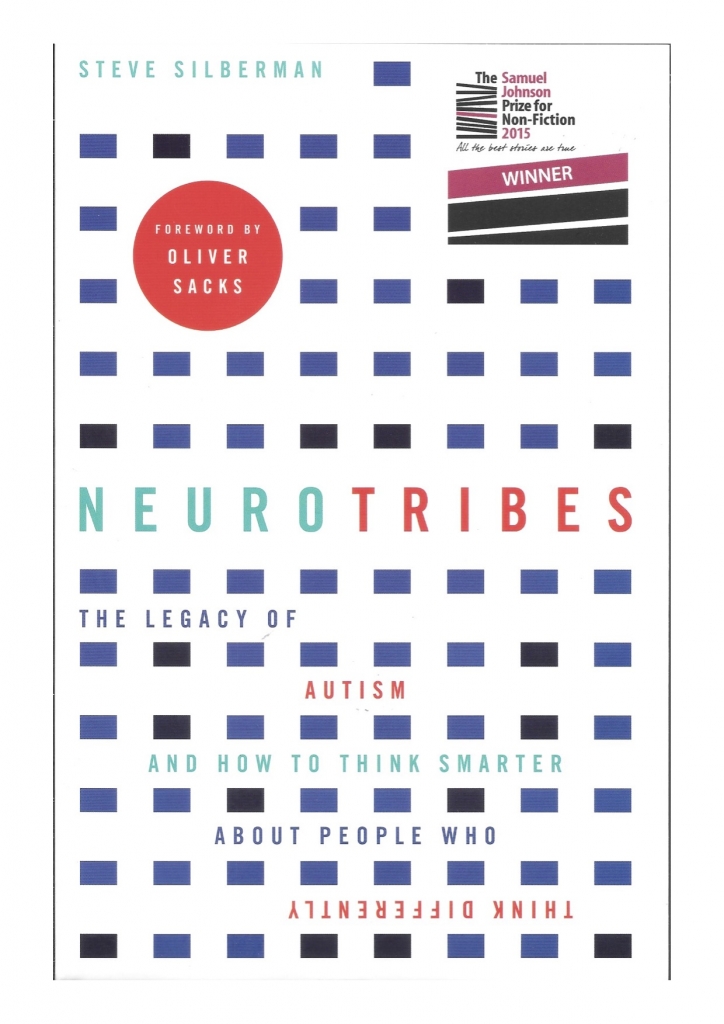The one sentence summary
We need to be more intelligent about how we view those with autistic traits because they think differently.
WHAT THE BOOK SAYS

- The author wrote an article in Wired in 2001 called The Geek Syndrome, investigating the theory that there were an undue number of autistic children in Silicon Valley. Could it be that assortative mating was causing those with similar autistic traits to produce children with autism? (the so-called ‘engineer’s disorder’)
- After an overwhelming response, he produced Neurotribes – a huge piece of work covering the entire history of autism and all related diagnoses. It goes back to the earliest autism research and casts light on the growing movement of neurodiversity, which proposes that conditions like autism, dyslexia and attention-deficit/hyperactivity disorder (ADHD) should be regarded as naturally occurring cognitive variations with distinctive strengths that have contributed to the evolution of technology and culture (many people with these traits are exceptional at specific activities such as science, maths, and music).
- Autism is variously described as a devastating developmental condition, a lifelong disability, and a naturally occurring form of cognitive difference akin to genius. In truth, it can be all of these things. The word comes from the Greek word autos meaning self, and was originally coined because autistic people often seem happiest in isolation.
- The truth about the topic has often been suppressed by the very clinicians who discovered it, as they disagreed over countless definitions. Now things are clearer, the number of diagnoses has soared in recent years.
- The fact that autism was first ‘discovered’ by two clinicians working independently on either side of the Atlantic is considered one of the great coincidences of modern medicine. But was it? One was child psychiatrist Leo Kanner in the USA, and the other was Hans Asperger in Vienna.
- Through detailed research, the author discovers that although Kanner only once referred in passing to Asperger, he in fact hired his former diagnostician, Georg Frankl, so he must have been very familiar with his work and methods. Through his silence on the matter he allowed it to seem as though he made the big breakthrough himself.
- Kanner originally believed autism to be peculiar to children, but it is now known to carry on throughout life. He also coined the term ‘refrigerator mother’ and claimed that cold, distant parenting could cause autism – something that turned out to be completely untrue, and was subsequently debunked by Navy psychologist Bernard Rimland in 1964.
- Rimland himself was also controversial in recommending the use of aversives – control measures to ‘discipline’ autistic children, sometimes with electric shocks. But he wasn’t as ruthless as Ole Ivar Lovaas, who used all sorts of restraining measures and even turned his attention to using them on subjects with gender dysphoria (the condition of feeling one’s emotional identity as a male or female is the opposite to one’s biological sex).
- In the early days, there were all sorts of theories about how to help. Because of obsessive eating preferences, many children were found to have vitamin deficiencies, or high levels of undesirable elements such as mercury. This can be helped by a process called chelation, which involves using compounds to bind with toxins and then expel them in urine – a controversial and expensive process that has spawned a whole industry.
- Major progress was made on clear diagnosis of autism in 1979, by the UK psychologist Lorna Wing. She stated that autism is not a categorical diagnosis but a dimensional one – not a “yes” or “no” but rather “of what type?” She effectively replaced Kanner’s unified syndrome with an autistic continuum or spectrum.
- The spectrum of criteria for diagnosis can include:gross and sustained impairment of emotional relationships with people; apparent unawareness of personal identity appropriate to age; pathological preoccupation with particular objects or certain characteristics of them; sustained resistance to change in the environment and a striving to maintain or restore sameness; abnormal perceptual experience; frequent acute and seemingly illogical anxiety; speech lost, never acquired or unrelated to age.
- Other related terms include:
- ABA is applied behaviour analysis, leading to interventions and approaches to help severely autistic people to improve.
- Echolalia is the term for the way in which autistic people sample the speech they hear and repurpose it for their own use.
- Stimming is self-stimulatory behaviour, and usually refers to specific repeated behaviours such as rocking, hand flapping, spinning, or repetition of words and phrases.
- Long after the work of Asperger, the term Asperger’s Syndrome was coined as a diagnostic label for gifted loners.
POINTS TO CONSIDER AND DISCUSS
- For those on the spectrum, social engagement with others can be problematic but those on it should be regarded as different, not less. They are not dysfunctional – they just have a different frame of mind.
- Neurodiversity: “There is more than one way to do it.” One way to understand this is to think of the brain in terms of human operating systems. Just because a computer is not running Windows doesn’t mean that it is broken. By autistic standards, the ‘normal’ brain is easily distractible, is obsessively social, and suffers from a deficit of attention to detail and routine.
- So people on the spectrum experience the neurotypical world as relentlessly unpredictable and chaotic, perpetually turned up too loud, and full of people who have little respect for personal space. (Neurotypical is the humorous name given to nonautistic people by autistic people – disproving the view of many clinicians that autism prevents people from having a sense of humour).
